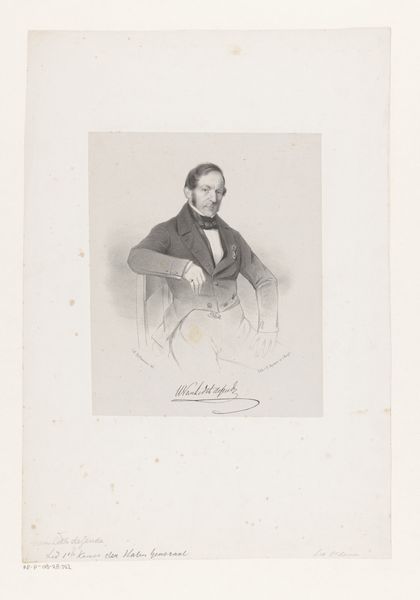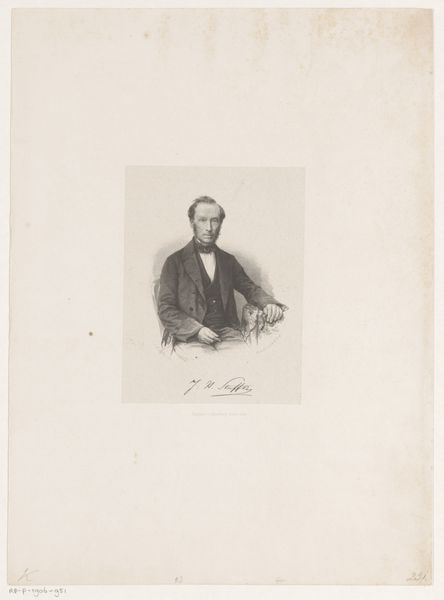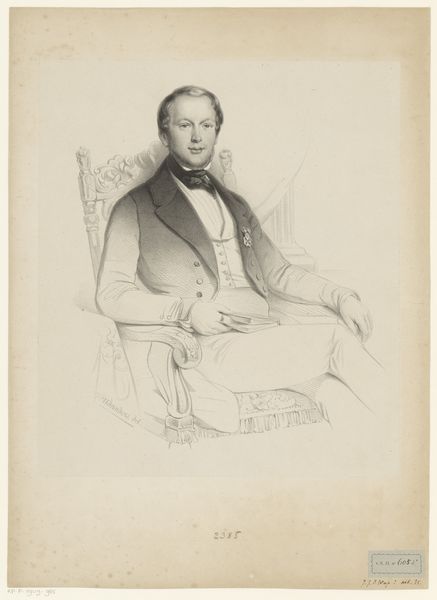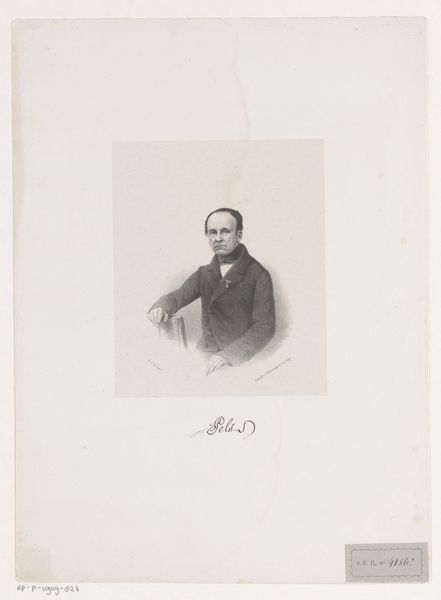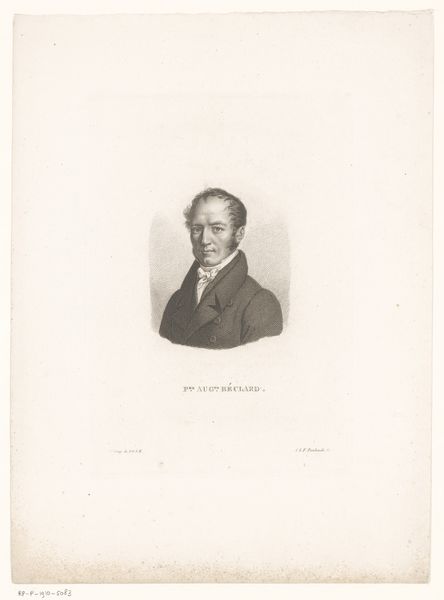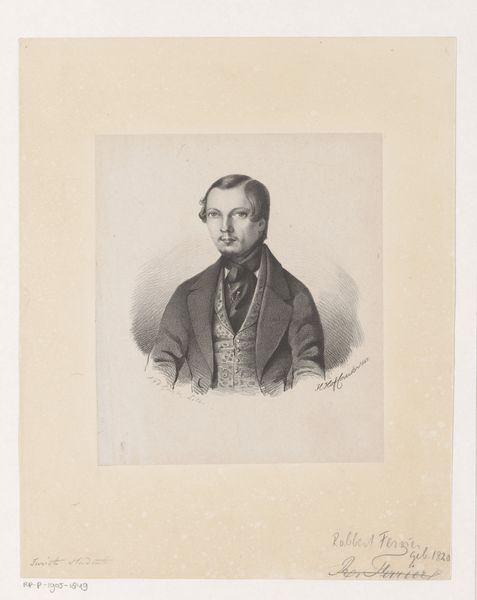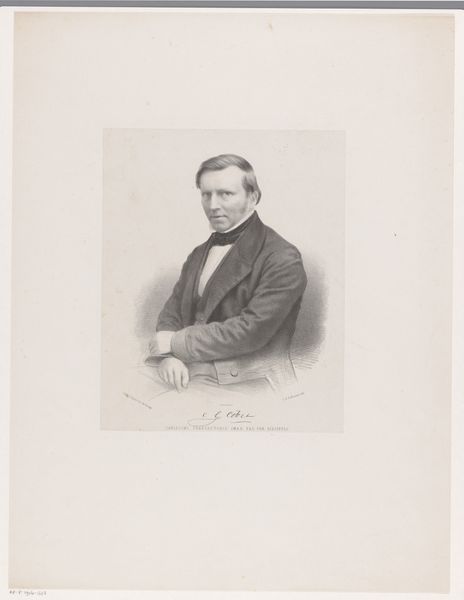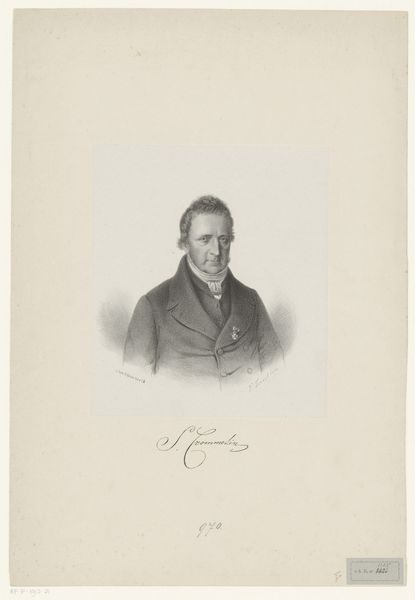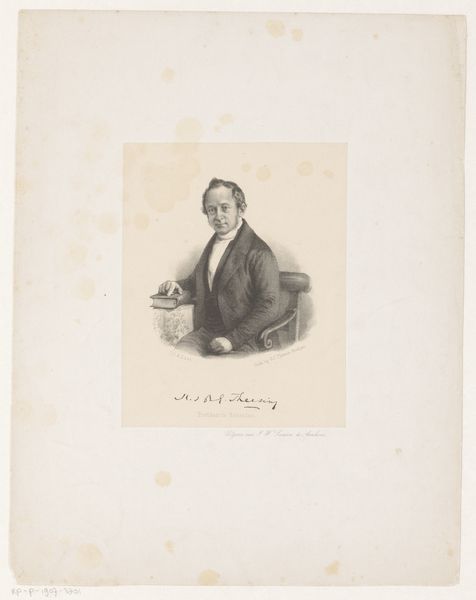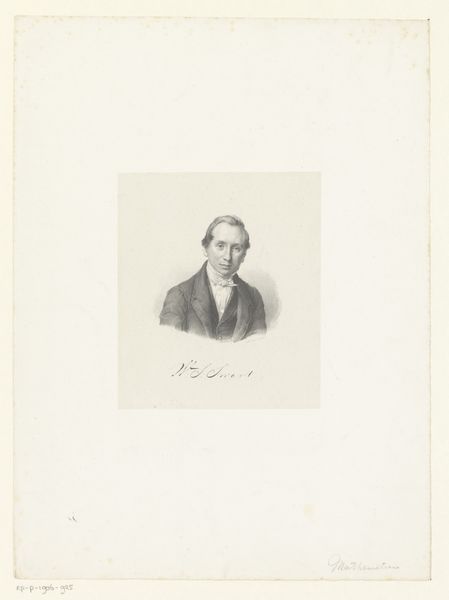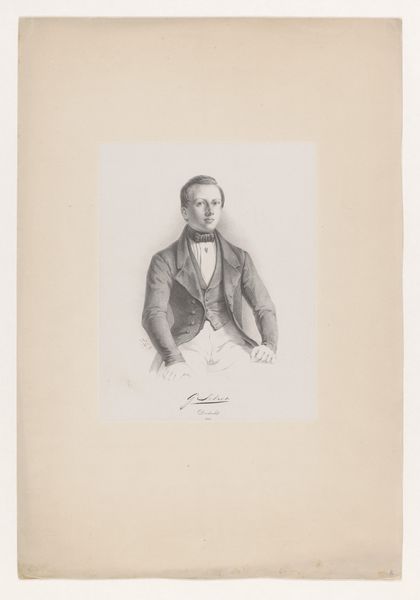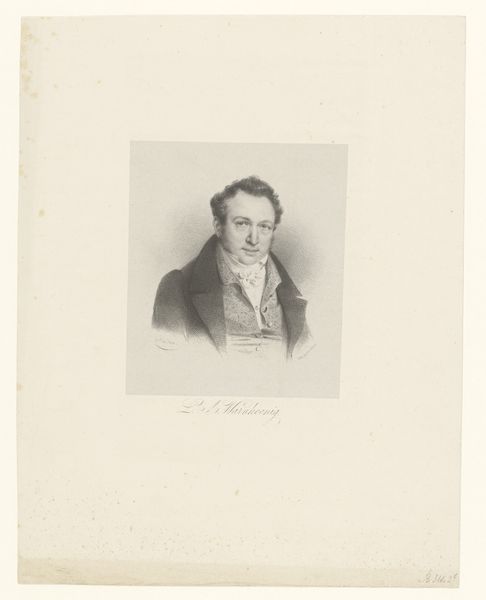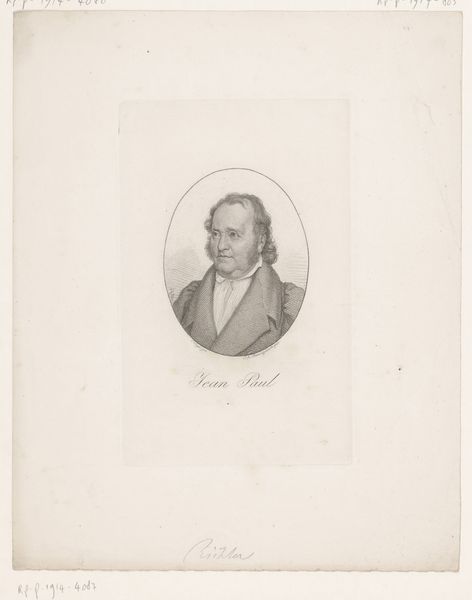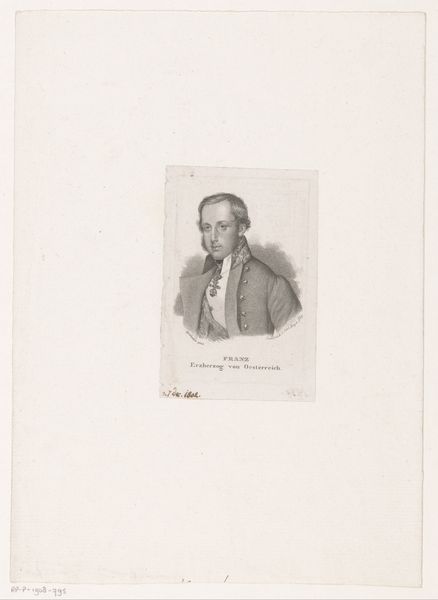
drawing, paper, pen, engraving
#
portrait
#
drawing
#
paper
#
romanticism
#
pen
#
engraving
Dimensions: height 585 mm, width 450 mm
Copyright: Rijks Museum: Open Domain
Editor: So, this is Georg Koch’s “Portret van Bernhard Eberhard,” made in 1848. It's an engraving, pen and ink on paper, giving it this delicate, almost ghostly quality. What strikes me is the subject's serious expression – he looks like he's carrying the weight of the world on his shoulders. How do you interpret this work? Curator: It’s crucial to place this portrait within its historical context. The year 1848 was a revolutionary year across Europe, marked by uprisings and calls for social change. Look at Bernhard Eberhard – his composed demeanor, the careful detail in his clothing – it speaks to a very specific class identity. What do you notice about his gaze? Does it connect or disconnect him from the viewer? Editor: He's looking off to the side, not directly at us, almost as if contemplating something. It creates a sense of distance. Maybe he is disconnected, as you say. Curator: Exactly. In that era, particularly amongst intellectual circles, there was a profound sense of responsibility and also, perhaps, disillusionment. Artists and thinkers were grappling with shifting power dynamics. I wonder how Koch is using Eberhard's image to comment on the role of the intellectual in a time of upheaval. What do you think his social standing may be given the artwork's overall feeling? Editor: It seems pretty clear the person has certain standing. His serious look now makes me consider the position of power and whether that position may have some uncertainty about it, given the broader revolts and unrest you mentioned. I see the romantic elements, but I also recognize elements of what was brewing in Europe at that time, socially and culturally. Curator: Precisely. These images aren’t just about individual likeness; they're reflections of societal tensions. I find myself looking at this in a completely new light. Editor: This has given me so much food for thought; it makes me curious about other portraits from the time, and whether they show similar features or details that reveal clues about social and political issues during the time.
Comments
No comments
Be the first to comment and join the conversation on the ultimate creative platform.
